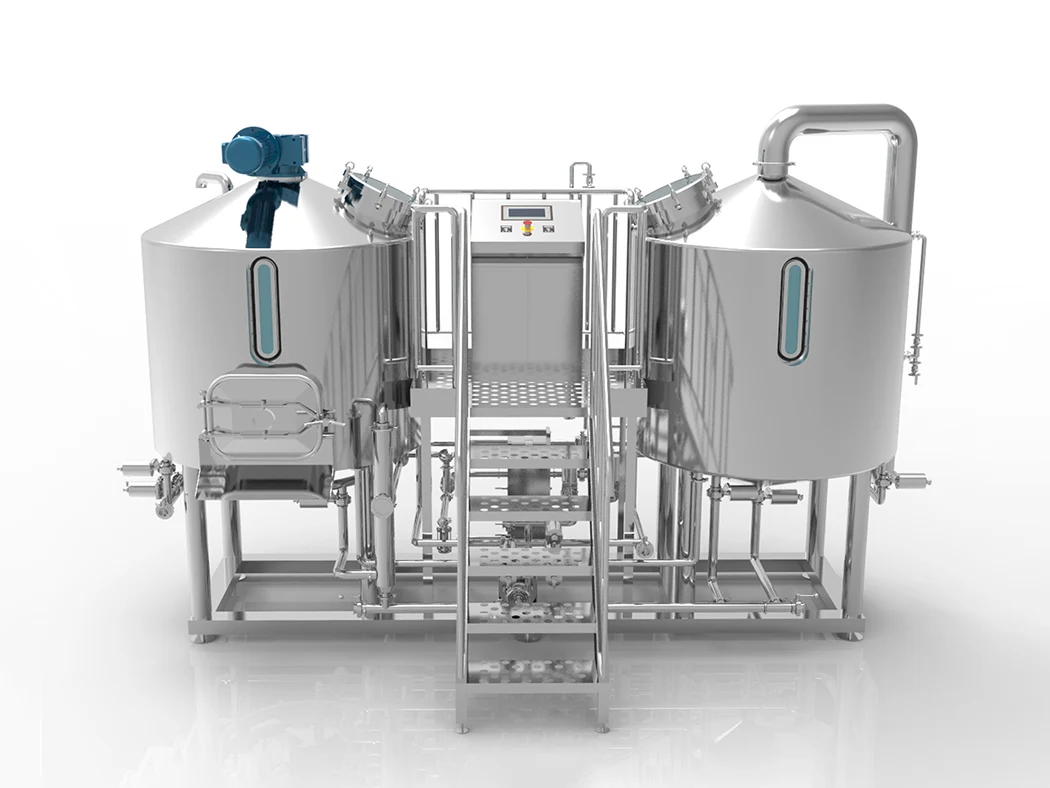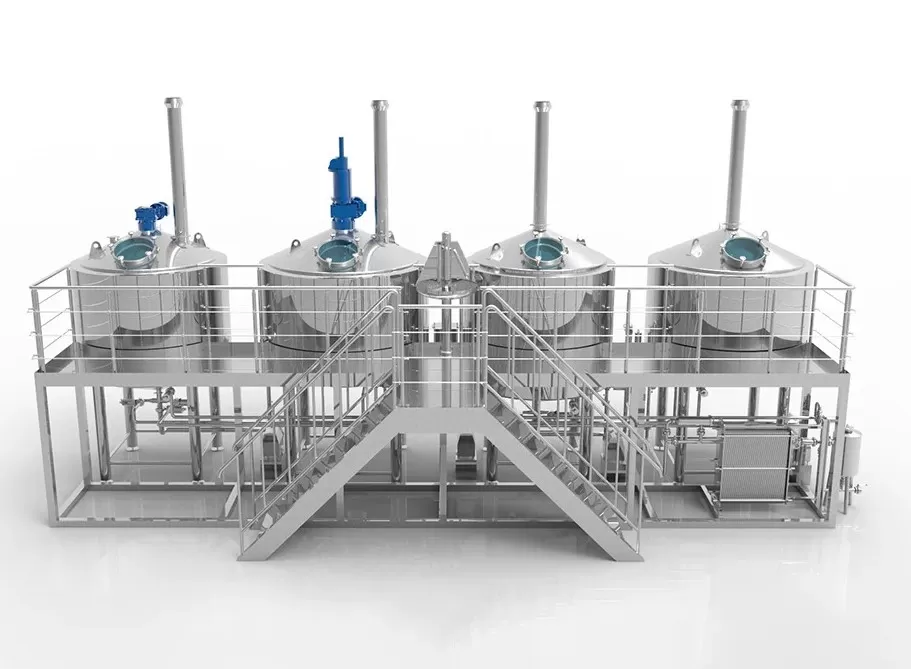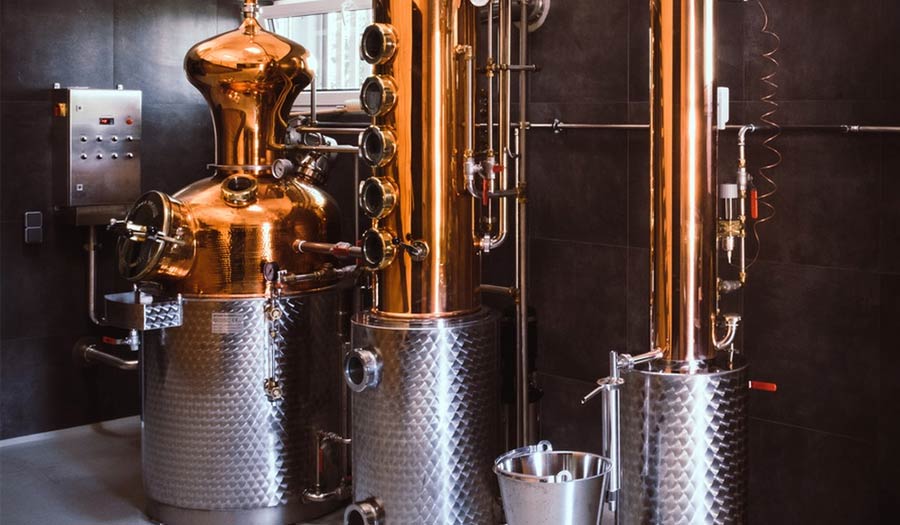In the brewing industry, the material of equipment not only affects the flavor and quality of beer but also reflects the professionalism and brand image of the brewery. With the rise of the global craft beer market, stainless steel 発酵タンク and copper brewing equipment have become the most popular choices. The former is known for its durability, ease of cleaning, and cost-effectiveness, while the latter is favored for its excellent heat conductivity and unique visual appeal. So, which option is more suitable for your brewery? This article will provide an in-depth comparison of their advantages, disadvantages, and application scenarios to help you make a more informed equipment selection.
Stainless Steel Fermentation Tank vs. Copper Brewing Equipment: Performance and Application Comparison
In the beer brewing process, the material of equipment directly affects product quality, production efficiency, and brand image. The two most commonly used materials today are stainless steel fermentation tanks and copper brewing equipment. They differ significantly in terms of heat conductivity, appearance, maintenance costs, and suitable application scenarios.
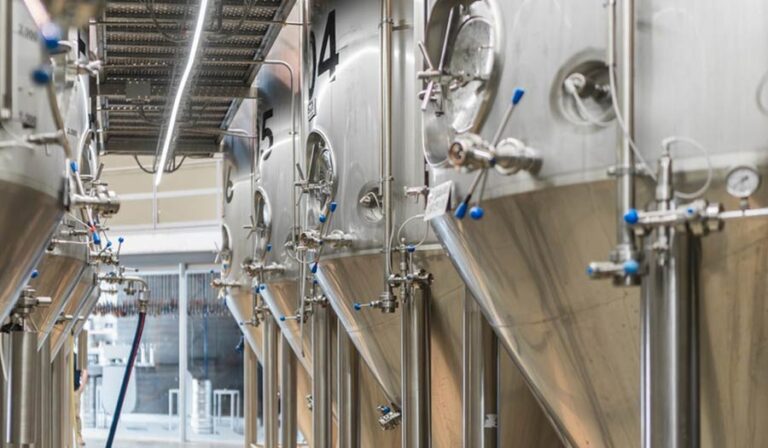
Main Technical Comparison Table
Comparison Item | ステンレス製発酵タンク | 銅製醸造設備 |
Material Features | High strength, corrosion-resistant, food-grade safe | Excellent heat conductivity, attractive appearance |
Thermal Conductivity | Moderate (≈16 W/m·K) | Excellent (≈400 W/m·K) |
耐食性 | Outstanding, strong oxidation resistance | Weaker, easily oxidized or discolored |
クリーニング&メンテナンス | Supports automatic CIP cleaning, low maintenance cost | Requires manual polishing and coating, higher maintenance cost |
耐用年数 | 10–20 years (longer with proper maintenance) | 5–10 years (needs regular care) |
Appearance | Industrial, modern style | Vintage, premium, highly decorative |
Typical Application | Large-scale breweries, automated production lines | Brewpubs, microbreweries, exhibition or tourist sites |
Investment Cost | Moderate to low, high cost-performance ratio | Higher, often used as a design feature |
Food Safety | Excellent, no metal ion leaching | Requires internal coating to prevent contamination |
Market Trend | Mainstream equipment type | High-end customized and display-focused option |
Comparative Analysis and Selection Recommendations
Stainless steel fermentation tanks are renowned for their hygiene, safety, durability, and ease of cleaning, making them the preferred choice for modern breweries. They can withstand high pressure, accommodate various fermentation processes, and, when paired with automated control systems, enable stable, large-scale production.
In contrast, copper brewing equipment attracts market attention with its excellent heat conductivity and distinctive appearance. Copper ensures more even mashing and boiling, enhancing aroma layers, while its striking visual appeal makes it ideal for brewpubs, visitor centers, and other venues where the brewing process is showcased.
Advantages of Stainless Steel Fermentation Tanks
Higher Hygiene and Safety
Stainless steel is the preferred material for food-grade equipment. High-quality stainless steel (such as 304 or 316L) offers excellent corrosion resistance and chemical inertness, ensuring that no harmful substances are released and no reactions occur with the beer during high-temperature, high-pressure fermentation. This makes stainless steel fermentation tanks almost a standard in industrial breweries.
Easier Cleaning and Maintenance
Modern stainless steel tanks are often equipped with CIP (Clean-In-Place) systems, allowing automated cleaning, sanitization, and hot water rinsing. This automation not only saves labor but also significantly improves hygiene standards and reduces the risk of contamination.
Longer Service Life and Higher Cost-Effectiveness
Although the initial investment is slightly higher than ordinary iron equipment, ステンレスタンク require almost no additional anti-corrosion treatment. With a stable service life exceeding ten years, they are an ideal long-term investment.
Insulation Performance and Structural Optimization
Many manufacturers add a polyurethane insulation layer to the exterior of stainless steel tanks and equip them with temperature control systems. This is particularly crucial for large-scale production, ensuring stable fermentation temperatures, promoting yeast activity, and improving beer quality.
Wide Application and Strong Modularity
From small brewpubs (500L) to industrial breweries (5,000L and above), stainless steel tanks can be flexibly configured. Additional modular components, such as cooling jackets, sampling ports, and level indicators, can be added according to production needs.
The Unique Advantages of Copper Brewing Equipment
Traditional Craftsmanship and Cultural Symbol
Copper brewing equipment is a symbol of European craft beer culture. Traditional breweries in Germany, Belgium, and the Czech Republic often use copper mash tuns. The vintage texture and metallic sheen of copper add an artistic touch to the entire brewing process, making it visually appealing and culturally significant.
Excellent Heat Conductivity
Copper has a thermal conductivity more than twenty times higher than steel, allowing for more even heating and precise temperature control. During the mashing and boiling stages, temperature directly affects malt enzyme activity and aroma release, giving copper vessels a slight advantage in flavor control.
Enhances Beer Flavor
Studies show that copper reacts with sulfides during the boiling process, reducing off-flavors in beer and improving purity. This contributes to the distinctive taste of some traditional European beers.
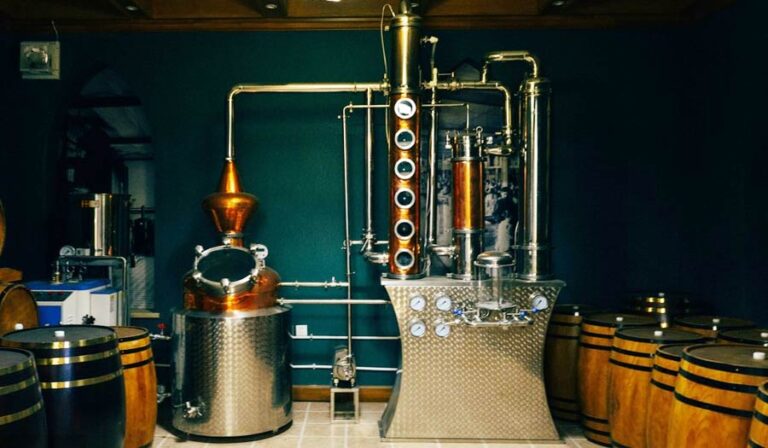
Equipment Selection Recommendations for Different Types of Breweries
Large-Scale Breweries (Industrial Type)
The primary goals of large-scale breweries are high efficiency, stable production, and consistent product quality. In such facilities, stainless steel fermentation tanks are the ideal choice. They can withstand high pressure, resist corrosion, and support CIP (Clean-In-Place) systems with precise temperature control, ensuring stable long-term production. Additionally, the modular design of stainless steel equipment allows for future expansion and upgrades, effectively reducing overall operational costs, making it the preferred solution for industrial-scale production.
Small to Medium Craft Breweries
Small and medium-sized craft breweries focus more on flavor uniqueness and brand identity. These facilities often adopt a hybrid configuration of copper mash tuns and stainless steel fermentation tanks. Copper mash tuns in the initial stage enhance malt aroma and visual appeal, while stainless steel fermentation tanks ensure hygienic, safe, and stable fermentation. This “copper exterior, steel interior” approach preserves traditional flavor advantages while maintaining modern production efficiency, making it a popular configuration in the craft beer industry.
Brewpubs or Restaurant Experience Venues
For brewpubs or restaurants emphasizing display and customer experience, copper brewing equipment can significantly enhance brand image and visual impact. The vintage appearance and shiny metallic finish of copper attract customers and serve as decorative highlights for the space. Although the initial investment is higher, the display value and marketing effect often lead to a quick return, especially for business models centered around “on-site brewing experiences.”
Educational or Tourism-Oriented Breweries
For beer education centers or tourist-oriented breweries, small copper brewing systems combined with a visual operation platform are the best choice. Transparent tanks and visual controls allow visitors to understand the brewing process intuitively, enhancing interactive experiences while promoting culture and brand awareness. This configuration prioritizes experience and educational value rather than large-scale production.
Start-Up Microbreweries
For start-up microbreweries, cost and ease of maintenance should be the primary considerations. Small-capacity stainless steel fermentation tanks with semi-automatic control systems can meet experimental and small-batch production needs while offering good scalability for future expansion. Low cost, high cost-effectiveness, and easy maintenance are the most important factors during the early stage of operations.
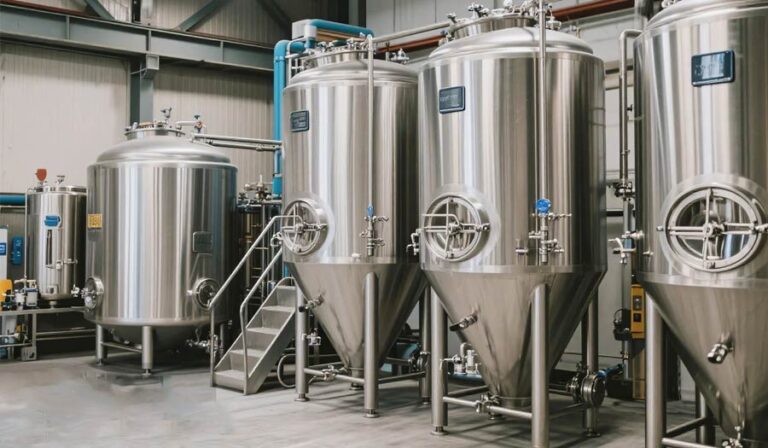
Investment Perspective: Cost and Return Analysis
When selecting brewing equipment, performance and suitability are important, but investment cost and return period are also key factors in decision-making. Different materials vary significantly in purchase cost, maintenance expenses, energy consumption, and payback period.
- Stainless Steel Fermentation Tanks:The initial purchase cost of stainless steel tanks is moderate. Although slightly higher than ordinary iron equipment, their corrosion resistance and long service life significantly reduce maintenance costs. Automated cleaning and temperature control systems improve operational efficiency, reduce labor input, and ensure stable beer quality. For large-scale production breweries, stainless steel equipment can achieve long-term, high-efficiency output at a relatively low total cost, with a typical return on investment (ROI) period of 3–5 years.
- Copper Brewing Equipment:The purchase and installation costs of copper equipment are significantly higher than those of stainless steel. While copper offers excellent heat conductivity and a striking visual appearance, it is prone to oxidation and requires regular manual polishing and protective maintenance. Coupled with a relatively shorter service life, the ROI period for copper equipment is longer, typically 5–8 years. Copper systems are better suited for display-oriented or high-end brand projects, such as brewpubs, bars, and tourism-focused microbreweries, where returns rely more on brand value and marketing impact rather than purely production efficiency.
Practical Recommendations for Equipment Selection
Clarify Production Capacity Requirements
Before selecting equipment, evaluate the brewery’s annual output and future expansion plans. For annual production exceeding 200 tons, a full stainless steel system is recommended to ensure production stability and ease of maintenance. For microbreweries or brewpubs producing less than 50 tons, small stainless steel fermentation tanks or copper equipment can be considered to meet flexible production needs.
Consider Space and Budget
Equipment size, installation space, and investment budget are important factors. Copper equipment, while visually appealing and offering excellent heat conductivity, is large and costly, making it suitable for display-oriented or high-end projects. Stainless steel equipment, on the other hand, saves space, is cost-effective, and is better suited for industrial-scale production and long-term use.
Pay Attention to Maintenance and Cleaning
Maintenance costs vary significantly depending on the material. Stainless steel fermentation tanks support CIP (Clean-In-Place) systems, making daily maintenance simple. Copper equipment requires manual polishing, coating, and protective maintenance. Consider the technical level and maintenance capacity of your staff to reduce operational pressure later.
Emphasize Supplier Qualifications and Craftsmanship
Whether choosing copper or stainless steel, the manufacturer’s qualifications and equipment craftsmanship are key. Welding precision, polishing quality, sealing performance, and temperature control reliability directly affect equipment lifespan and production results. Choosing an experienced supplier with a good reputation ensures long-term stable operation.
Plan for Future Expansion and Upgrades
Modern breweries often expand as market demand grows. It is recommended to select modular equipment, whether fermentation tanks, mash tuns, or cooling systems, to allow future capacity expansion or automation upgrades, reducing overall investment risk.
結論
Selecting the right brewing equipment is crucial for ensuring beer quality, improving production efficiency, and building brand image. Stainless steel fermentation tanks are ideal for industrial breweries seeking high output and stability, while copper brewing equipment, with its unique appearance and excellent heat conductivity, is the first choice for brewpubs, restaurants, and display-oriented breweries. For craft breweries aiming to balance flavor, efficiency, and brand value, a hybrid configuration of copper mash tuns and stainless steel fermentation tanks provides the optimal solution.
If you are looking for the most suitable brewing equipment for your brewery or brewpub, the professional team at ミセット・グループ can provide customized equipment solutions based on your production capacity, budget, and brand requirements, helping you quickly improve production efficiency, optimize costs, and build a unique brand advantage. Contact us today to start your professional brewing journey!

